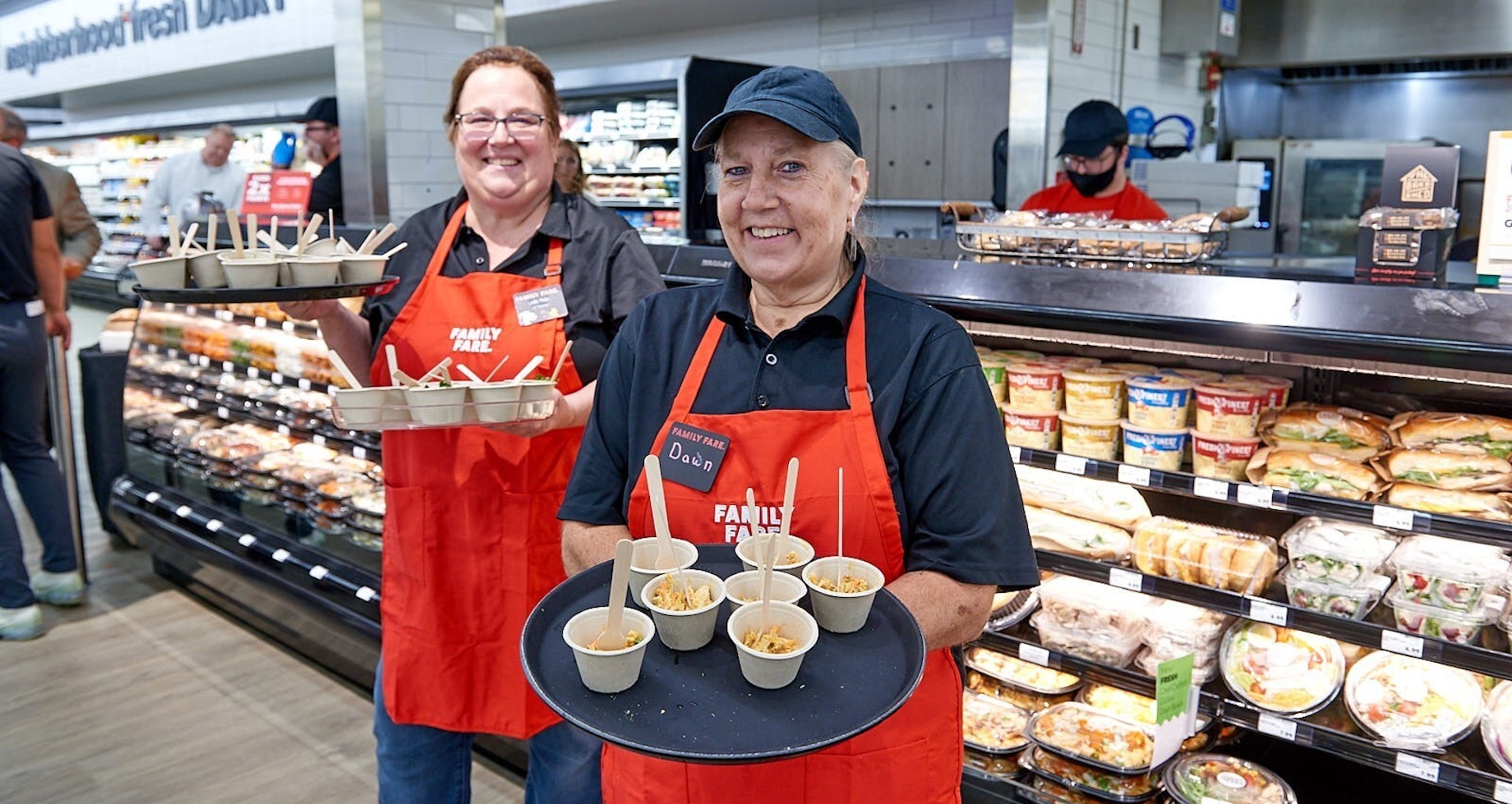Rising costs continue to squeeze grocers’ notoriously thin profit margins, but today’s economics can make things even more challenging for independents. To check in on how these community-based tenants are faring, Commerce + Communities Today contributing editor Joel Groover sat down with Christopher Jones, chief government relations officer and counsel for the National Grocers Association. The nearly 2,000-member NGA represents privately owned or controlled food retailers, from mom-and-pop supermarkets to publicly traded chains in which a family owns the majority of shares. Jones also explained how cooperative wholesalers like Wakefern Food Corp., known for banners like ShopRite, Price Rite Marketplace and The Fresh Grocer can help independent grocers be more competitive.

Grocers continue to reinvest in their stores despite today’s high cost of capital. This past August, food solutions company SpartanNash held a grand reopening of its modernized Family Fare store in Holland, Michigan. Above, employees offer samples during the grand reopening. The company said the store boasts “fresh meal solutions, convenience-focused food selections, a beef jerky bar and a nostalgic vintage candy station” and represents the new direction for other Family Fare stores across the region. Photo courtesy of SpartanNash
What challenges are independent grocers facing?
[They] had a 1.41% net margin last year, which illustrates how tough it is to survive. You basically have to do a lot more volume to make ends meet. Our members’ costs are all going up across the board. It’s everything from cost of goods to the costs of labor, [credit card] swipe fees, rent, insurance, freight and energy. It’s all going up. What’s tough about that for independent grocers is: In an inflationary environment, it’s harder to compete for the consumer dollar. Consumers have become much more willing to switch across competing retailers, so what our members are experiencing is attrition of their consumer base as people go to where they can get a better deal on products. That could be Walmart or dollar stores or online e-commerce. Keeping and maintaining that customer is really hard.
We’re starting to see more consolidation in the industry, and a significant number of independent grocers have been for sale. SpartanNash, for example, just acquired Fresh Encounter, which has stores in Ohio, Indiana and Kentucky. I would expect more consolidation among independent grocers and possibly more at the wholesale level, as well, if Kroger and Albertsons are able to combine.

Independent grocers are among the wholesale customers of publicly traded food solutions company SpartanNash, which also operates 147 brick-and-mortar grocery stores, primarily under the banners of Family Fare, Martin’s Super Markets and D&W Fresh Market. In October, SpartanNash grew its retail footprint by 33% after acquiring the 49-store independent grocery chain Fresh Encounter, Inc., pictured. Photo courtesy of SpartanNash
What puts independent grocers at a disadvantage on price?
Retail has become so consolidated that the largest retailers have what we call “buyer power” over the wholesale food manufacturers. That allows those large retailers to squeeze wholesalers for lower prices. When they are able to do that to forestall inflation, manufacturers have to offset their own higher production costs. They do that by increasing costs on customers that don’t have the same kind of bargaining leverage. So our members have seen a higher rate of inflation in our segment relative to big-box stores. Today’s high cost of capital is also a major factor in our ability to invest in new markets and remodel stores. The largest retailers are putting a lot of money into e-commerce, delivery and fulfillment. It’s difficult for independents to compete for sure. So it’s a perfect storm for us right now. We want to be able to compete. When you lower our overhead, we almost always lower our retail shelf prices in turn.
What about the concept of independent grocers joining forces to be more competitive?
It is the only way to survive these days. In many cases, multiple retailers own a cooperative wholesaler themselves. Or they might all work with a larger wholesaler, whether publicly traded or privately owned, to create the kind of scale and efficiencies that they need to do business in a market dominated by large firms. There are anywhere from a dozen to 20 such wholesalers and distributors in the United States. UNFI is the biggest nationwide wholesaler and is publicly traded. It was the product of a merger between UNFI and SuperValu back in 2018. Another national wholesaler is C&S, based in New Hampshire. [Associated Wholesale Grocers] out of Kansas City and Wakefern based in New Jersey are the two largest cooperative wholesalers. To help the smaller retailers compete and survive, wholesalers have ramped up their offerings in areas like marketing strategies, integration with [point-of-sale] technology and providing real estate advice.
Why exactly are independent grocers important?
Independent grocers are very much ingrained in the communities in which they operate. They tend to purchase locally and work with local vendors, local farmers and feature local products. That’s a differentiator for them. It draws in consumers who want to support their local economies. They also tend to reinvest in their communities in the form of charitable giving to Little Leagues, Boy Scouts or Girl Scouts and their local high school football teams. Studies by Kansas State University’s Rural Grocery Initiative and other researchers point to local grocers as a multiplier to local economies. The ancillary economic activity is significant. If you have a local shopping center with a grocery store, the grocer draws in other businesses like restaurants, dry cleaners, local bank branches and hardware stores. If it closes or leaves, the loss of that economic anchor can be fatal for those ancillary businesses. It can undermine the tax base of that community. We think it’s essential for this segment of the market to flourish in order to keep smaller communities, in particular, whole and to support Main Street.